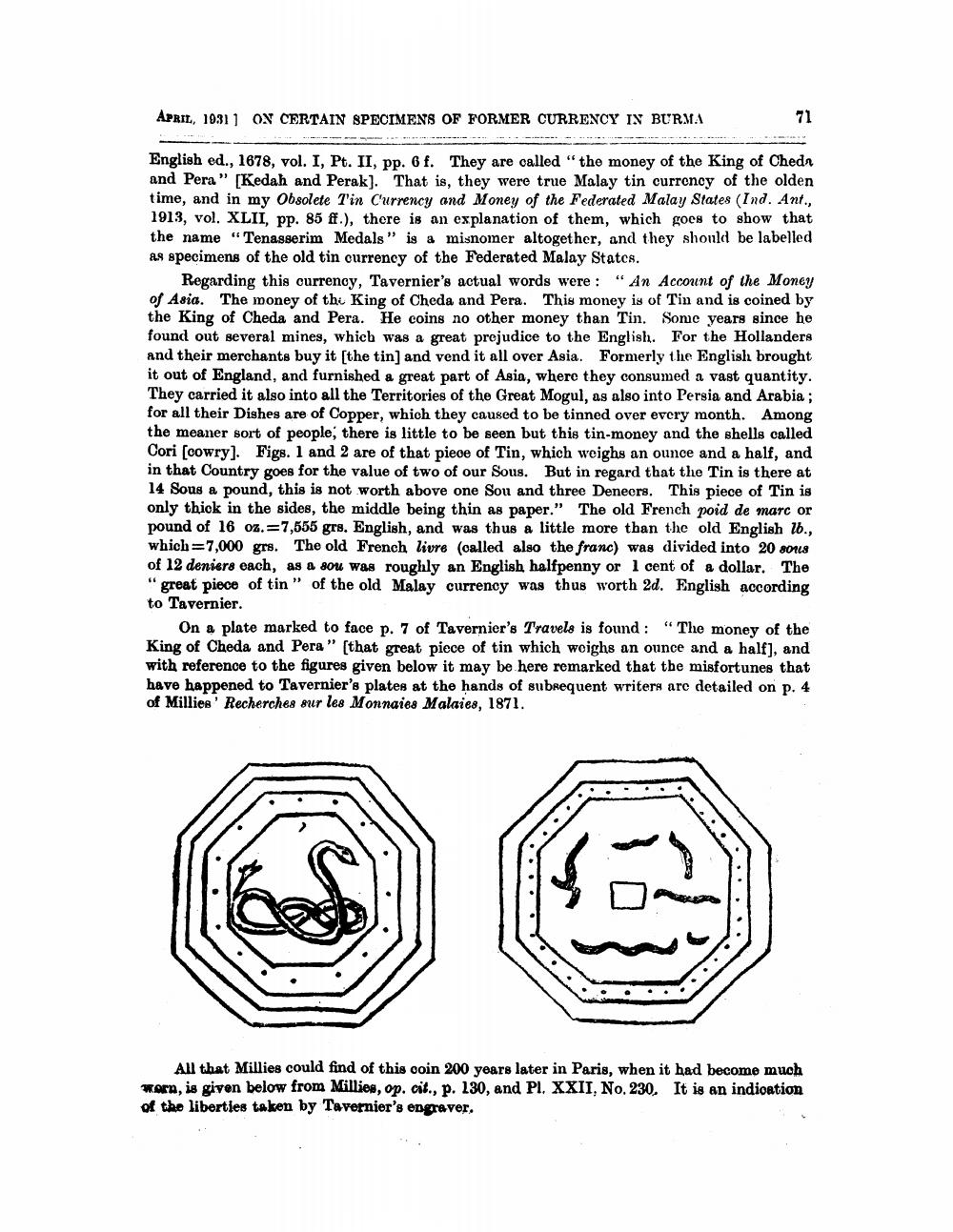________________
APRIL, 1931 1 ON CERTAIN SPECIMENS OF FORMER CURRENCY IN BURMA
English ed., 1678, vol. I, Pt. II, pp. 6 f. They are called "the money of the King of Chedr and Pera" Kedah and Perak). That is, they were true Malay tin currency of the olden time, and in my Obsolete Tin Currency and Money of the Federated Malay States (Ind. Ant., 1913, vol. XLII, pp. 85 ff.), there is an explanation of them, which goes to show that the name "Tenasserim Medals" is a misnomer altogether, and they should be labelled As specimens of the old tin currency of the Federated Malay States.
Regarding this currency, Tavernier's actual words were : "An Account of the Money of Asia. The money of the King of Cheda and Pera. This money is of Tin and is coined by the King of Cheda and Pera. He coins no other money than Tin. Some years since he found out several mines, which was a great prejudice to the English. For the Hollanders and their merchants buy it [the tin, and vend it all over Asia. Formerly the English brought it out of England, and furnished a great part of Asia, where they consumed a vast quantity. They carried it also into all the Territories of the Great Mogul, as also into Persia and Arabia ; for all their Dishes are of Copper, which they caused to be tinned over every month. Among the meaner sort of people, there is little to be seen but this tin-money and the shells called Cori foowryl. Figs. 1 and 2 are of that piece of Tin, which weighs an ounce and a half, and in that Country goes for the value of two of our Sous. But in regard that the Tin is there at 14 Sous a pound, this is not worth above one Sou and three Deneers. This piece of Tin is only thick in the sides, the middle being thin as paper." The old French poid de marc or pound of 16 oz.=7,655 grs. English, and was thus a little more than the old English lb., which=7,000 grs. The old French livre (called also the franc) was divided into 20 80118 of 12 deniers each, as a sou was roughly an English halfpenny or 1 cent of a dollar. The "great piece of tin” of the old Malay currency was thus worth 2d. English according to Tavernier.
On a plate marked to face p. 7 of Tavernier's Travels is found : "The money of the King of Cheda and Pera" (that great piece f tin which weighs an ounce and a half], and with reference to the figures given below it may be here remarked that the misfortunes that have happened to Tavernier's plates at the hands of subsequent writers are detailed on p. 4 of Millies Recherches sur les Monnaies Malaies, 1871.
All that Millies could find of this coin 200 years later in Paris, when it had become much worn is given below from Millies, op. cit., p. 130, and Pl. XXII, No. 230. It is an indioation of the liberties taken by Tavernier's engraver.




